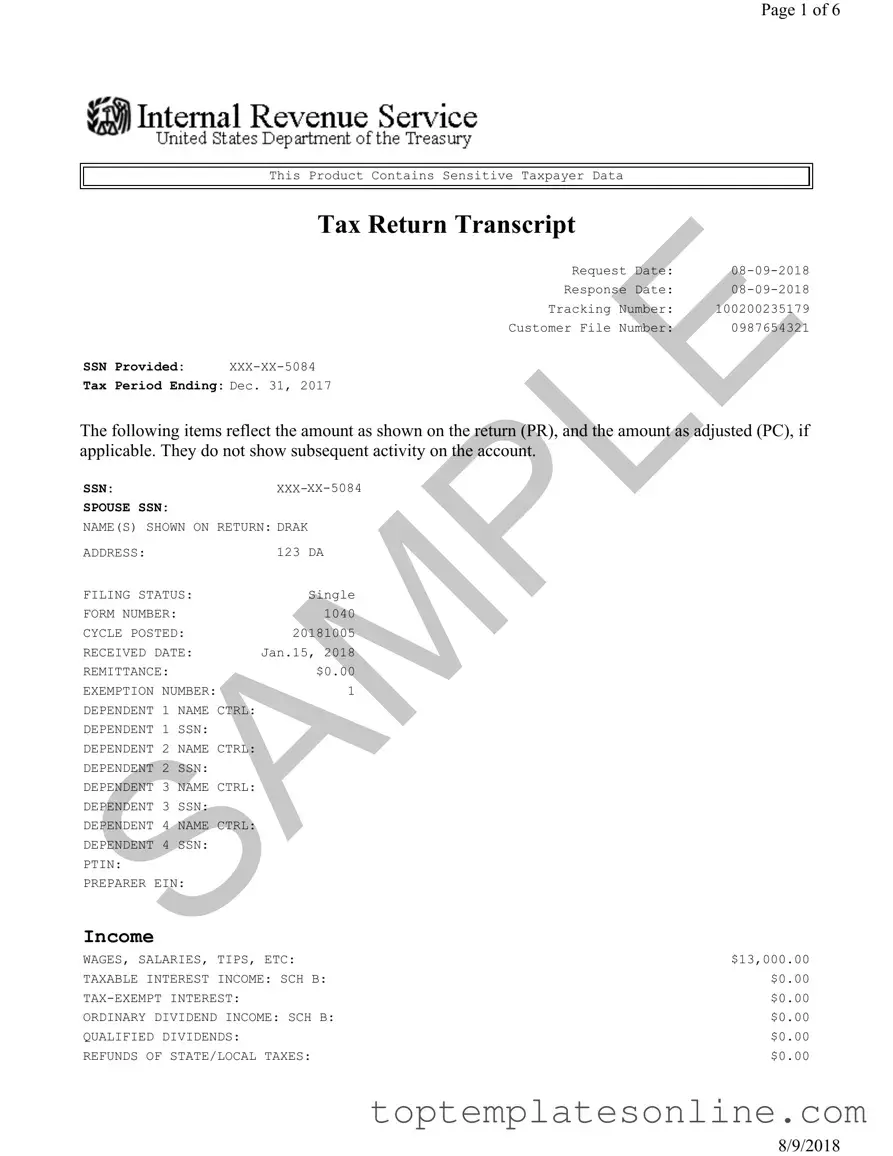The Sample Tax Return Transcript form serves as a vital document for individuals seeking to understand their tax situation for a specific year. This form encapsulates essential details such as the taxpayer's Social Security Number (SSN), filing status, and total income, providing a snapshot of financial activities reported on the tax return. For instance, it highlights wages, business income, and other sources of revenue, along with adjustments that affect the taxpayer's adjusted gross income. Additionally, the form outlines tax liabilities, including tentative tax amounts and any applicable credits, which can significantly influence the overall tax responsibility. It also includes information on payments made, whether through withholding or estimated tax payments, and specifies any balance owed or refund due. By summarizing these critical elements, the Sample Tax Return Transcript form not only aids taxpayers in reviewing their financial standing but also serves as a reference for lenders and other entities requiring verification of income and tax compliance.
